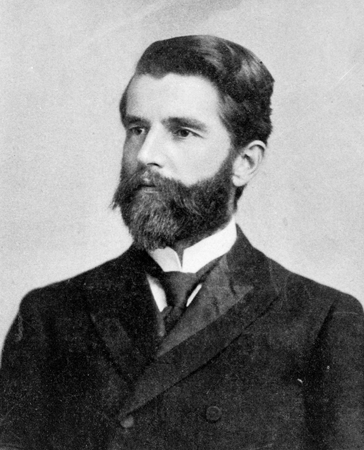South Dakota v. North Carolina, a U.S. Supreme Court case decided in 1904, raised the question of whether the original jurisdiction of the Supreme Court extended to a dispute in which one state (South Dakota) attempted to sue another state (North Carolina) for the value of bonds issued by the latter state. Although the legal issues were substantial, the decision's origin in and long-term effect on North Carolina politics were equally pronounced.
The author of the lawsuit was Daniel L. Russell Jr., Republican governor of the state from 1897 to 1901. Russell conceived the plan in 1900, while his party was collapsing from the onslaught of white supremacy Democrats. Russell knew that during Reconstruction southern legislatures had issued large numbers of bonds-some the product of corruption, some not-to finance various public improvements, especially railroad construction. By the 1890s the legal problem confronting bondholders was an inability to enforce the written terms of the bonds. After regaining power in southern state governments during the 1870s, Democrats passed laws that readjusted or repudiated bond debt, which was largely held by persons outside the South. Often a bond's owner was offered pennies on the face value dollars of the bond. Equally significant, rulings by lower federal courts that the Eleventh Amendment prevented federal claims against readjustment left the bondholders with no judicial remedy.
Russell's plan to avoid the legal barrier was simple: he would arrange the donation of a small number of adjusted bonds to a state for charitable purposes and then represent the state in an original proceeding against the issuing state in the U.S. Supreme Court. Victory in the high court would significantly raise the value of the remaining bonds, forcing settlement on southern repudiators from Virginia to Texas. Russell's services to the bondholders would also make him a rich man.

The North Carolina bonds were given to South Dakota in the summer of 1901, and South Dakota filed documents asking the Supreme Court to hear the case the following November. At that time, Russell and Butler's role in the suit was unknown to the Democrats now in charge of North Carolina government, but evidence gathered by lawyers for the state in 1902 and 1903 revealed some of their activities in the South Dakota transaction. Thereafter the Democratic press portrayed the scheme as a traitorous act of defeated Populist and Republican leaders. Conveniently for Democrats, Fusion was linked to Republican Reconstruction through the bonds.
The Supreme Court heard oral arguments regarding the case on 13 Apr. 1903 and 8 Jan. 1904. Although the Eleventh Amendment to the U.S. Constitution expressly prohibited a federal court to hear suits brought against one state by citizens of another state, the Supreme Court, by a five-to-four vote, required North Carolina to pay South Dakota $27,400, the full value of ten bonds issued to the Western North Carolina Railroad by the General Assembly of 1866-67. The bonds had been secured by a second mortgage on stock in the state-owned North Carolina Railroad.
South Dakota v. North Carolina was a significant decision of constitutional law that had lasting political effects in North Carolina, particularly for Butler. He left the Populist Party in 1904 and, like many other former Populists in the state, became a Republican. Butler sought to make North Carolina Republicanism resemble the progressive Republican Parties of the Midwest, but his efforts were hampered by the bond issue. Democrats were able to use the case and Butler's larger bond collection plans to discredit the Republican Party of the early twentieth century by linking it to the Republicanism of Reconstruction, Fusion, and African American voting.